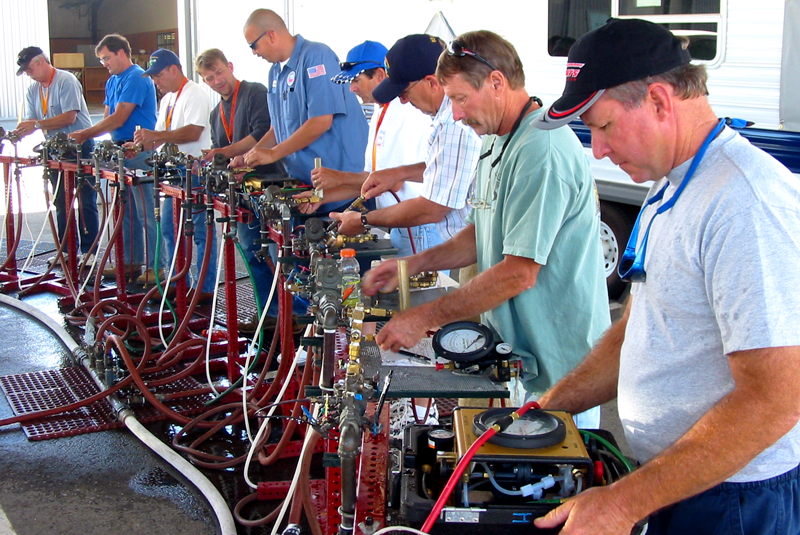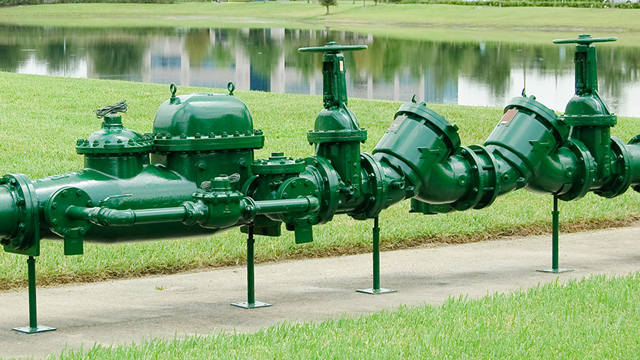Should I Test My Water for Backflow
Should I Test My Water for Backflow
Blog Article
The publisher is making several good points related to Is backflow testing necessary? as a whole in this article which follows.

Yes, you need to backflow test your house's water supply to make sure that the water is free of toxins and also hazardous levels of chemicals. You should not attempt to carry out heartburn screening on your own due to the fact that of the equipment required and area for mistake. We recommend that you call a specialist plumber every couple of years to examine your water.
Heartburn Can Impact Both You as well as Your City
Due to the fact that dangerous heartburn can influence the public water supply in enhancement to a single building, numerous cities establish backflow standards. Modern-day cities have backflow tools in area that shield the water supply that comes from the majority of homes and also business properties. The real threat comes from irrigation systems, which can harm the water system with hazardous plant foods, manure, and various other chemicals.
What Causes Heartburn?
A typical root cause of backflow is a loss of water pressure that triggers the water to siphon back right into the water supply. An instance is cleaning a paint bucket utilizing a hose pipe. You fill the paint pail up with water, leaving the hose pipe in the pail. After time, there is a loss in water stress and the hose pipe starts to suck the water back into the water supply. As you can envision, there are now chemicals from the paint that are going into the supply of water, possibly positioning a danger. Unfortunately, lots of people are not also aware of backflow screening, but there are numerous reasons why it's so vital.
Heartburn Screening is Required by Legislation in Particular Cities
Relying on where you live, you may actually be needed by regulation to backflow test your legislation. Iowa City maintains a document of all residential properties served by the city's water supply. The city requires that particular "high-hazard" facilities undergo heartburn testing. In some cases, properties such as houses and also apartment buildings are influenced.
You Can Prevent Heartburn
Unsafe backflow is quickly preventable if you have a professional plumber mount a heartburn device. If there is an active danger, the plumber will certainly additionally examine for backflow and establish. The major purpose of a backflow device is to prevent water from moving in reverse right into your water system. Plumbing technicians set up the gadget on the pipelines in your house to make sure that the water just moves in the appropriate instructions.
What is Heartburn?
In short, backflow is when water moves upwards-- the contrary instructions in the plumbing system. This is additionally known as "backpressure." When the water moves in this direction, it can blend with harmful toxic substances and posture a risk.
Call a Plumber to Examine for Backflow Before It is Far too late
A plumbing business can quickly evaluate your home's water to establish if there are any harmful chemical degrees. And if you do find that your water has high degrees of toxins, a plumber can quickly mount a backflow prevention tool.
Yes, you need to backflow test your residence's water supply to make sure that the water is totally free of toxins and also unsafe degrees of chemicals. Several cities develop backflow standards because dangerous backflow can impact the public water supply in enhancement to a solitary structure. A normal reason of heartburn is a loss of water pressure that triggers the water to siphon back into the water supply. After some time, there is a loss in water pressure and also the hose pipe begins to draw the water back right into the water supply. The main function of a backflow gadget is to prevent water from streaming backwards right into your water supply.
WHY DOES BACKFLOW TESTING NEED TO BE DONE EVERY YEAR
What Is Backflow?
Toxic gas backing up into a building is one example of potential backflow issues, but backflow can occur in many other ways.
Backflow is generally referred to as the reversal of a liquid or gas in a plumbing system.
Most issues for the public occur with backflow resulting in contaminated drinking water. If you look up backflow issues online you’ll probably find references to “potable” water. That means drinking water.
There have been backflow issues in the past with drinking water. Chemicals, sewage and other contaminants have found their way into drinking water causing health issues for those that count on the fresh water.
What Causes Backflow?
In a residence or commercial building water generally flows one way. This normal flow is usually driven by consistent pressure in the water and waste system.
Anything that changes the normal pressure in the system can lead to backflow.
Fire hydrant use or malfunction can reverse the normal pressure in the system on a city line, but backflow can occur in a number of different ways.
Sometimes backpressure might be caused by someone using a garden hose and submerging the end of the hose in a pool of liquid. If pressure is lost the flow could reverse and contaminants could be released into the drinking water.
Anytime there is a connection between contaminants and the drinking water there is potential for a backflow issue. Sometimes these connections are not immediately obvious like the garden hose connecting to a building’s drinking water supply.
Backflow Regulations
The Environmental Protection Agency (EPA) provides guidelines and regulations for state and local governments regarding backflow. State and local governments also have their own guidelines and regulations for backflow prevention.
Arizona has its own backflow regulations.
Due to issues with backflow in the past, regulations require backflow preventer devices to be used in nearly all residential and commercial buildings.
A backflow preventer is a device that prevents backflow as cross-connection points where potential backflow issues may occur.
While backflow is not a common occurrence, preventers are in place to make sure there is no contamination should something malfunction or go wrong with a building’s water supply.

Do you like reading up on Backflow Prevention? Make a remark down the page. We'd be glad to listen to your insights about this write-up. In hopes that you visit us again before long. If you please take the opportunity to promote this blog entry if you appreciated it. Many thanks for your time. Come back soon.
Excellence awaits, dial! Report this page